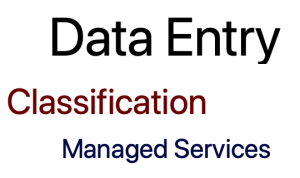Financial management in educational institutes involves the effective planning, organizing, and controlling of financial resources to achieve the institution’s goals and objectives. It encompasses various activities, such as budgeting, financial reporting, revenue generation, expenditure control, and financial analysis. Here are some key aspects of financial management in educational institutes:
- Budgeting: Developing a comprehensive budget is crucial for educational institutes. This involves estimating revenue from various sources (tuition fees, grants, donations) and planning expenditures (salaries, infrastructure development, supplies, student support services). A budget helps in allocating resources efficiently and monitoring financial performance.
- Revenue Generation: Educational institutes need to diversify their revenue streams to reduce dependence on a single source. This can include increasing student enrollment, exploring fundraising opportunities, establishing partnerships with the industry, offering professional development programs, and utilizing assets effectively.
- Expenditure Control: It is essential to control and monitor expenditures to ensure financial sustainability. This involves implementing effective procurement processes, negotiating favorable contracts, optimizing resource utilization, and regularly reviewing expenses to identify cost-saving opportunities.
- Financial Reporting: Timely and accurate financial reporting is essential for transparency and accountability. Educational institutes should maintain proper accounting systems and produce financial statements (such as income statements, balance sheets, and cash flow statements) regularly. These reports provide insights into the institute’s financial health and aid decision-making.
- Grants and Funding: Educational institutes often seek external grants and funding opportunities to support research, infrastructure development, and specific projects. Financial management involves identifying and applying for relevant grants, complying with funding requirements, and effectively utilizing the funds received.
- Risk Management: Financial management also includes assessing and managing financial risks. This may involve implementing internal controls to prevent fraud or mismanagement, having insurance coverage, and conducting regular audits to ensure compliance with financial regulations.
- Financial Analysis: Educational institutes should perform financial analysis to evaluate their performance, identify trends, and make informed decisions. Key financial ratios, such as liquidity ratios, profitability ratios, and efficiency ratios, can provide insights into the institute’s financial position and help identify areas for improvement.
- Long-term Financial Planning: Educational institutes should engage in long-term financial planning to ensure sustainability and achieve their strategic objectives. This may involve forecasting future financial needs, identifying potential revenue sources, and developing strategies to manage financial challenges or changes in the external environment.
- Compliance: Educational institutes must comply with financial regulations, tax laws, and reporting requirements. Adhering to legal and regulatory obligations is crucial to maintain the institute’s reputation and financial integrity.
Effective financial management in educational institutes requires collaboration between finance professionals, administrators, and other stakeholders. It helps ensure that financial resources are allocated efficiently, enabling the institute to provide quality education, maintain infrastructure, and support its overall mission and objectives.

